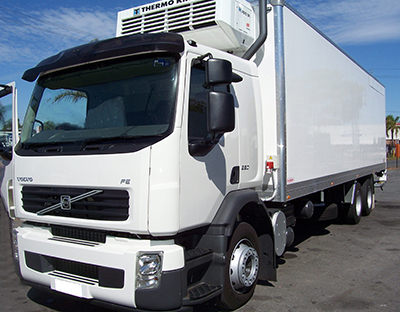Food logistics enters new transformational stage
Cold chain imperatives will shape site selection like never before.
Editor’s Note: Inmar, Inc. – a technology company which owns and operates intelligent commerce networks – remains a leader in the food logistics sector. In this exclusive interview, Paul Weitzel, VP, Inmar Willard Bishop Analytics, answers some questions regarding the latest developments in the cold chain.
Logistics Management: What will be the impact on food logistics as a consequence of the Amazon/Whole Foods agreement?
Paul Weitzel: Amazon’s acquisition of Whole Foods is just the beginning step. It signals their commitment to figure out how to make online grocery shopping work. Amazon and Walmart will eventually be the two bigs and many mid-tier grocery chains will have to adjust or fight for their survival.
LM: So what can shippers expect?
Weitzel: As Amazon becomes a major force in the food space, expect more direct buying opportunities and more direct shipments to their existing facilities, as well as new forward-positioned food supply facilities. This will dilute volume now going to self-distributing retail warehouses and food wholesalers. If enough volume shifts, it will impact FTL efficiencies and delivery frequencies thus, increasing the cost-to-serve mid-tier grocery customers. This will play out over time so the impact will not be immediate. If the volume becomes significant enough, self-distributing retailers may have to consolidate the number of their facilities in order to operate efficiently.
LM: What are the implications of more e-commerce in the U.S. for food shippers?
Weitzel: We will likely see more ship-to locations (local supply hubs) as eCommerce grows and the various fulfillment models shake out. These local supply hubs (mini warehouses) will support home deliveries and curbside pickup programs. The local supply hubs will need to support fresh/commissary foods in addition to the packaged volume.
Local supply hubs will emerge because fulfilling eCommerce orders from existing retail locations is very difficult to do and it’s expensive. While retail stores are within 5-10 miles of 80% of the U.S. population, they were not designed to support eCommerce operations:
Lack of adequate backroom space, staging areas and layout (already challenged to support current eCommerce volume which is 2%-4% of store sales)
Inability to support a proper curbside and pickup program (inadequate number of lanes and traffic flow); most stores today are in strip malls, limiting access points
Shelf inventory is spread across 50,000-150,000 square feet of floor space making shopping/picking inefficient.
LM: Any other changes in the forecast?
Weitzel: With limited space in these new supply hubs, we could see more pressure on CPGs to offer alternative case pack designs, e.g., smaller quantities that will support case shipments to customers (EOQs) and also reduce inventory/space requirements. We could also see more demand to have CPGs ship directly to these supply hubs, increasing the number of deliveries and ship-to points.
We could also see an increase in the use of consolidators/mixing centers and hybrid distributors emerge.
And, we are already seeing some large CPGs beginning to build out their own direct to consumer eCommerce sites. While we don’t expect this to have a significant impact overall, it will lead to more parcel volume nonetheless.
LM: How big a role does site selection play in the food cold chain and logistics sector?
Weitzel: Site selection is very important for the entire food supply chain including distribution locations, retail locations and remote pick-up points. Multiple fulfillment and inventory models (home delivery, curbside, remote pickup, etc.) will continue and dictate a greater level of site selection planning.
Logistics planning will become increasingly important as a significant amount of volume shifts to eCommerce. While the last mile is expensive, the demand for home deliveries is growing and 1 hour, 2 hour and 4 hour routes will impact location, fleet size and need for route optimization.
New facilities (e.g., supply hubs) will need to:
- Accommodate significant eCommerce growth (10 year vision)
- Leverage advanced picking and IT systems
- Play a commissary role or at minimum, support local commissary and fresh deliveries
- Accommodate frozen, chilled and dry goods
- Allow for easy access to major population areas and key travel arteries
- Support B2B locations as well
LM: Any final thoughts to share with our readers?
Weitzel: The key is building a vision that allows for distribution flexibility and one the supports significant eCommerce growth. The companies who are on the front-end of this planning (including site selection) will be in a much greater position to accommodate eCommerce growth. This will be critical as the cost to fulfill an eCommerce order today is more than the cost to fulfill a brick & mortar order, an online volume will only increase.













